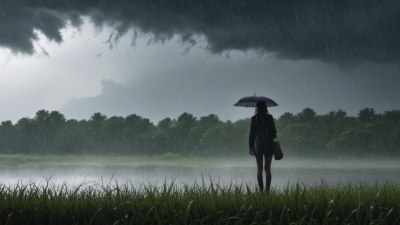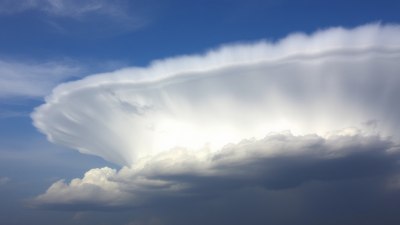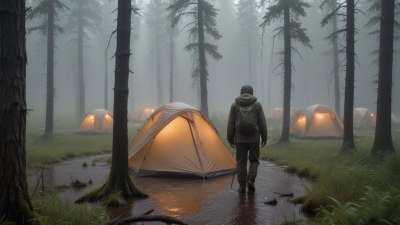Why You Sometimes Wake Up to Frost and Go to Bed in Warmth
Discover why temperature fluctuations cause frosty mornings and warm evenings. Learn about weather patterns, seasonal changes, and more.

Image by ibragimovn on Freepik
Have you ever experienced the curious phenomenon of waking up to a frosty landscape yet enjoying warm weather by the end of the day? This common occurrence is not just a matter of random weather; it reflects a variety of atmospheric conditions and geographic factors. Understanding why these temperature changes happen helps us appreciate the complexity of our local climates and the broader environmental patterns. In this article, we’ll delve into the science behind why you can find frost on your lawn in the morning but bask in warmth by evening.
Understanding Temperature Inversions
A key concept to grasp is the temperature inversion. Normally, air temperature decreases with altitude; however, during an inversion, a layer of warm air traps cooler air near the ground. This situation often occurs overnight, particularly on clear, calm nights when the ground loses heat rapidly. As the warm air layer develops above, it can cause air temperatures at the surface to plummet, leading to frost formation. By midday, the sun warms the surface, dissipating the cold air trapped below and resulting in comfortable temperatures. Thus, the stark contrast in temperature from morning to evening is not an accident but rather a result of natural atmospheric behaviors.
The Role of Moisture
Moisture levels in the air also significantly impact local temperatures. When humidity is high, the air retains heat more effectively, which can lead to milder night temperatures. Conversely, areas with lower humidity may experience cooler nights conducive to frost formation. The presence of dew or moisture on surfaces overnight cools these areas, fostering frost in the early hours while still allowing warmer daytime temperatures. As the sun rises and the air warms, the moisture evaporates, and the chill of the night disappears.
Local Geography's Impact
Your local geography plays a role in temperature variations as well. For example, valleys and low-lying areas are typically colder than hilltops or flat plains. Cool air tends to settle in these depressions overnight, while surrounding higher elevations may remain milder. Therefore, someone living in a valley might wake up to frost, while a neighbor on a hill may enjoy warmer temperatures. This geographic variation highlights how localized weather phenomena can create different experiences within close proximity.
Seasonal Changes and Length of Daylight
As seasons change, so does the length of daylight, altering the amount of heat that the Earth absorbs. In autumn and spring, when days are longer and the sun's angle is higher, we often experience a greater degree of temperature fluctuation. Longer daylight allows the surface to warm while cooler nights foster frost formation. This variation can create a scenario where one wakes up to icy surfaces yet enjoys pleasantly warm afternoons. Understanding this seasonal dynamics provides clarity on why temperature extremes occur within a single day during transitional seasons.
Weather Patterns and Fronts
Weather fronts that move through an area can drastically change temperatures within hours. A cold front passing through can lead to a rapid drop in temperature overnight, resulting in frost. If a warm front follows, it can lead to exceeding warmth in the afternoon as the sun breaks through the clouds. These shifting weather patterns are characterized by cold fronts replacing warm air masses, which explains the temperature rollercoaster experienced in many regions, particularly during transitional seasons.
Urban Heat Islands
Urban areas can also contribute to the phenomenon of waking up to frost and then experiencing warmth. Cities often have what are known as urban heat islands, where dense buildings, roads, and other infrastructure absorb and retain heat throughout the day. This can prevent frost from forming in city centers, leading to warmer morning temperatures compared to more rural areas. However, when the sun sets, urban areas may also feel the effects of rapid cooling due to reduced heat retention at night, creating a fluctuating temperature trend similar to their rural counterparts.
Climate Change Influences
Over the last few decades, climate change has also begun to influence temperature fluctuations, leading to unpredictable weather patterns. Changes in global climate disrupt historical weather norms. Some regions may experience unexpected cold spells even during warmer seasons, leading to frost when it would typically be warm. As the climate continues to change, demonstrating variations that lead to frost overnight and warmth by afternoon becomes increasingly common.
Personal Preparations
Understanding these temperature variations can help you prepare for daily weather changes. If your area shows signs of declining temperatures overnight, consider covering sensitive plants to protect them from frost damage. Conversely, dressing in layers can help you stay comfortable during the morning cold while shedding layers as the day warms up. Being aware of local weather forecasts, temperature inversions, and seasonal changes can also provide insights into what the upcoming days may bring.
The Enigma of Weather
Ultimately, the phenomenon of waking up to frost while enjoying warmth by the end of the day is a classic illustration of the complex interplay of various meteorological factors. Each day presents unique atmospheric characteristics that lead to fascinating temperature differences. By studying these emerging patterns, we enhance our understanding of our world and cultivate a deeper appreciation for the diverse climates we call home. Just as no two snowfall patterns are alike, mornings marked by frost and afternoons dominated by warmth present a tantalizing enigma, inviting us to explore further into the world of meteorology.
The journey from frosty mornings to warm afternoons encapsulates the intricacies of climate and temperature patterns. Not only do they reflect the dynamic nature of our environment but also offer a tangible lesson in the importance of being aware of our weather systems. Whether it’s the role of moisture, geography, seasonal changes, or broader climate shifts, the explanation behind this occurrence reveals just how interconnected and complex nature can be. By embracing this knowledge, we can adapt to our environments more effectively and foster a greater appreciation for the variety our world presents us.











